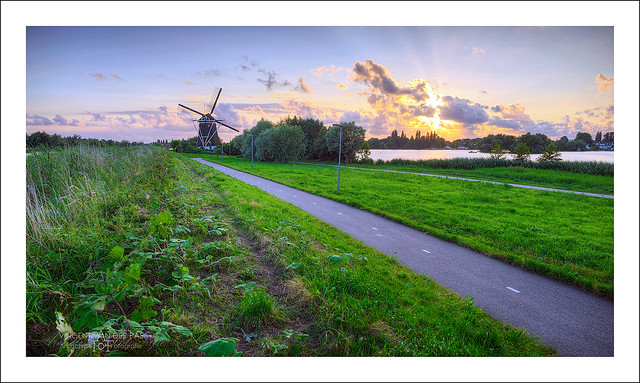In composition leading lines are used to draw the eyes of the viewer to a point of interest. Leading lines are a powerful composition element in photography that you can utilize when taking photos.

Leading Lines Photograph By Barbara White
They successfully cope with their main task to guide the viewer through the scene.

. If used successfully diagonals can express some movement flowing in the frame. Diagonal lines can be used by photographers to lead the eye to a point in the image. When using diagonal leading lines the photographer implies a sense of motion and adds depth to the image.
They have the freedom to move around and lead the viewer to the focal point of an image. A recently ploughed field or the ridges on a sand dune might be good examples of this although technically this is probably more converging lines another way to use lines in images. Diagonal lines are often used when you want to provide a sense of movement change or direction.
Leading lines are a powerful composition element in photography that you can utilize when taking photos. When diagonal lines lead directly to the focal point of an image they are being used as leading lines. The place where the lines lead should be an important element in the photo.
To use diagonal lines in photography you can start experimenting with angles and points of view. When you want to provide a sense of change motion or direction a diagonal line is a wonderful option. They convey depth and perspective in the image.
This provides an almost three-dimensional photo. Most often diagonal lines are visually followed from foreground to background left to right so in these cases your subject should be either at the start or end of your line to maximize impact. Often a more robust composition is achieved with the leading lines technique when a primary subject is on the other end.
Unlike horizontal and vertical lines that feel strong reassuring and restful a diagonal line in photos creates tension and energy. When viewing diagonal lines in an image there are two terms to consider. Leading the eye with diagonal lines.
Shoot with a DSLR. They work wonderfully as leading lines and can also provide a sense of movement through the frame. As with both horizontal and vertical lines diagonal lines that are repeated through out an image can create very effective patterns that can easily become the subject of a photograph themselves.
Diagonal Leading Lines. These lines help keep our eye in the frame and draw attention to the subject. If the diagonal line begins at the left corner of the frame and crosses toward the bottom right it appears as though the subject is entering the frame.
Its best to use diagonal leading lines from the bottom left corner of the frame and up diagonally as our eyes are naturally looking that direction. Take a look at the tree on the far left side of the photo. Take a look at the tree on the far left side of the photo.
How to use leading lines for awesome photography composition. You can use leading lines to add interest to your scene tell a. When it comes to leading lines they can be natural or man-made.
Diagonal Lines The human eye loves diagonal lines in photography or in nature especially when they lead at a sharp angle away from the edges of the frame both contrasting and complementing the vertical and horizontal boundaries that confine an image. By selecting the right angle you can make the vertical or horizontal lines in your frame more or less noticeable. What do diagonal lines represent in photography.
They lead the eye from the left side to the right side. Diagonal lines are extremely effective at doing this. Lets take a look at the different line elements you can use when composing your photos including leading lines vertical lines diagonal lines and horizon lines.
When done correctly you can even add depth and a sense of perspective. The viewer is intrigued to see where the diagonal line will take him. These lines normally track from foreground to background hence emphasizing a sense of distance and depth.
Leading lines are a compositional tool that guides a viewers eyes towards a point in the image typically the main subject. Vertical lines draw the viewers eye to the top or bottom of the image. Diagonal lines are an effective way to use the leading lines technique.
Diagonal lines cross an image from opposite corners of a frame. We expect something on a diagonal line to slide off and you cant easily lean up against a diagonal line without slipping. The branches lead to the train on the right side.
Like reading from left to right in photography diagonal lines use the same method. You can use one or multiple diagonals as long as they move towards the main point in the photo. In such a way they lead us from foreground to background highlighting the main subject at the beginning or end of the line.
Diagonals and Leading Lines Leading lines are a popular photographic composition element especially among landscape photographers though street photographers portrait photographers and more use leading lines to great effect. Diagonal leading lines create change or movement within a photo creating a strong sense of depth. The first one you notice is the diagonal line of the train cars and train track.
Diagonal lines in photography create a feeling of movement and change. Any edge between two surfaces is a line. There are a few leading lines in this photo taken by Richey Oliver.
And below is a set of diagonal lines that were created by the viewpoint of the camera. Vertical lines convey power and confidence so you see a lot of vertical leading lines in fashion photography portraiture and street photography says Silva. Youll find many vertical lines like lamp posts and window panes in human-made settings.
If you select an unusual angle it might help you take a unique photo. When used correctly diagonal leading lines can be a wonderful option when you want to emphasize a large depth of field in your image. Tension is created by intersecting a diagonal line which makes the eye focus towards this point.
Leading lines in iPhone photography. Another effect is they add a sense of perspective by providing depth to the image. The tension of the diagonal line versus a horizontal or vertical line makes the composition more engaging.
Diagonal lines show as tilted or slanted lines in images. Diagonal lines are often considered more dynamic compared to vertical or horizontal lines. Diagonal lines are used to add dynamism to an image to convey movement or to lead the viewers eyes to the point of interest.

Diagonal Lines In Landscape Photography

Diagonal Leading Lines In Photography

Using Diagonal Lines In Photography Line Photography Composition Photography Symmetry Photography

Diagonal Lines In Photography The Ultimate Guide

Diagonal Lines In Photography All You Need To Know Pixinfocus

Diagonal Leading Lines In Photography

Diagonal Leading Lines In Photography Composition Line Photography Composition Photography Architecture Photography
Diagonal Leading Lines In Photography Composition The Dream Within Pictures
0 comments
Post a Comment